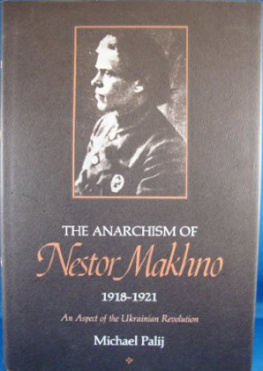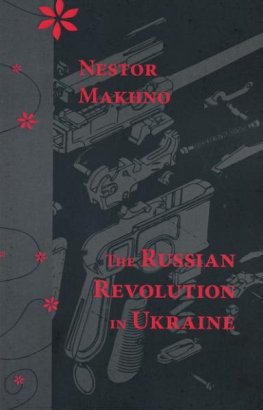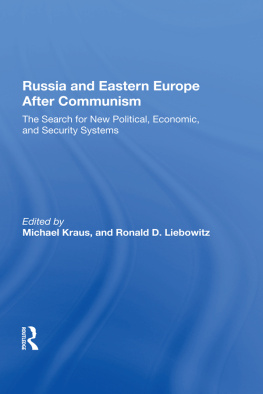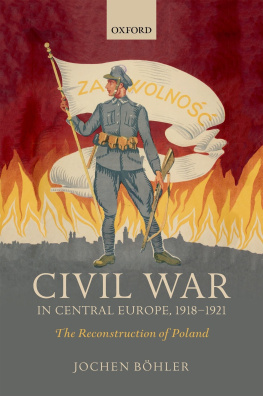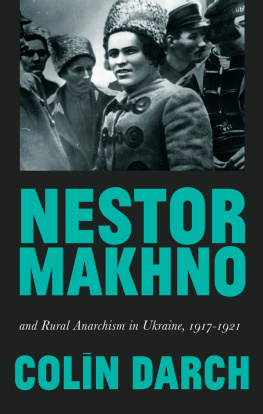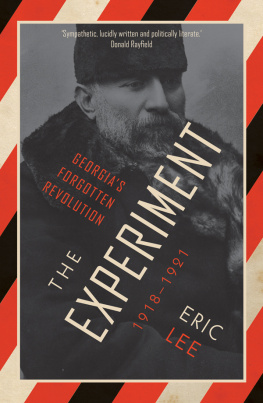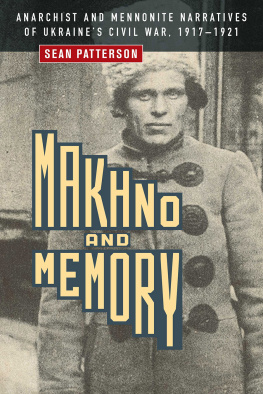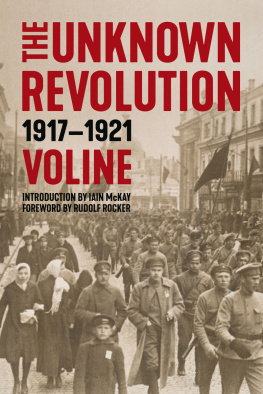Hetman Pavlo P. Skoropads'kyi, Symon Petliura;
Volodymyr K. Vynnychenko; Mykhailo Hrushevs
Makhno and partisansAnarchist group of Huliai-Pole
Nestor Makhno
Characteristic group of Makhno men
Nestor Makhno; Makhno's staff
Nestor Makhno, Paris, 1930-31
Prelude to Revolution
The Destruction of National Autonomy
The Ukrainian Revolution of 191720 was a crucial period in Ukrainian history, but it occurred at an especially unfavorable time for national aspirations. National development was not complete when the Revolution broke out in 1917, for the Russian administration in Ukraine had greatly hindered its development. The stunted state of the Ukrainian political, cultural, and socioeconomic heritage had a profound impact upon the course of the Revolution, the formation of the Ukrainian state, and its subsequent failure.
That impact began with individuals, of course, and Nestor Makhno, whose partisan activities affected both the Revolution and its failure, was more an anarchist than a nationalist. Although wishing to free Ukraine from the oppression of government, he fought against fellow Ukrainians with whom he disagreed as he fought with them when they shared a common enemy, the Russian Volunteer Army or the Bolsheviks. His story is one of a man concerned with freedom from government; his prerevolutionary activity, not strongly identified with the cause of Ukrainism, and his imprisonment gave him no basis for constructive principles to attain freedom, no vision of unity. His curious history can be understood only in the light of the history of Ukraine, where this account must begin.
Political autonomy in Ukraine had been extinguished late in the eighteenth century by Empress Catherine II. In an instruction in 1764, she advocated complete "administrative unification and 'Russifica-tion' " of Ukraine and the Baltic provinces. In the fall of the same year,the hetmanate was abolished in Ukraine and the Little Russian College, headed by Count Peter Rumiantsev, was created in its place.1
Between 1764 and 1775 Russian power in Ukraine steadily increased. The independent Zaporozhian Sich,2 the original center of Ukrainian Cossacks, had a sociopolitical order of its own that constituted a continuous threat to the successful imposition of Russian serfdom, but both the Sich and the hetman state lay in the path of Russia's access to the Black Sea. Therefore in 1775, at the close of the Turkish War, the victorious Russian Army suddenly besieged the unsuspecting Cossacks and destroyed the Sich. Higher ranking officers who surrendered to the Russians were sentenced to hard labor in Siberia, their property confiscated, and the rank and file were dismissed. The majority of the Cossacks, however, escaped from the Sich and settled at the mouth of the Danube in Turkey. From the "free lands" of the Cossacks, who had for three centuries defended Ukraine against the invasions of Tatars and Turks, Catherine carved out large estates mostly as grants for her favorites.
In 1784 Prince Potemkin, to prevent the flight of still more Cossacks from Russian control, persuaded Catherine to reactivate the Cossack organization. Known as the Black Sea Cossacks, they were settled between the Boh and Dniester rivers. In 1792 they were resettled near Azov and Black seas in the Kuban River Basin, and formed the nucleus of the Kuban Cossacks. In the early nineteenth century, they were joined by a considerable number of those who had previously escaped to Turkey. As early as 1751, Russia had established within the Sich large colonies of Serbs under direct Russian administration and control. After 1775, increasing numbers of Russians, Bulgarians, Moldavians, Armenians, Greeks, Jews, and especially Prussian Mennonites, as well as more Ukrainians, were settled in the free lands of the Cossacks.
After the destruction of the Sich, Catherine issued a decree in 1783 that abolished all Ukrainian political institutions and privileges. The hetman state was divided into provinces (gubernii) like Russia itself, and the Cossack organization was abolished and converted into regiments of the Russian regular army. The officers were permitted either to join Russian units or to retire from military service; those in the highest grades, however, were eventually granted the same rights and privileges as the Russian nobility.5 The rank and file were made into a separate, free, social class of Cossack peasants. At the same time, the Ukrainian peasantry of the former hetman state was reduced to the status of the Russian serf, and remained in unrelieved social and cultural darkness for several generations.
Many of the higher ranking officers, eventually convinced of the futility of struggling against Russian rule, endeavored to preserve their land and their status as noblemen, and sought careers in the Russian government, where a number held high posts. Prince Oleksander Bezborod'ko was the main adviser and secretary to Catherine II, and imperial chancellor under Paul II; Prince Viktor Kochubei, Count Petro V. Zavadovs'kyi, Count Oleksander Rozumovs'kyi, and Dmytro Troshchyns'kyi were among the ministers of Alexander I. An even greater number of Ukrainians served in various Russian civil institutions and in the army, eventually finding the institution of serfdom to their personal advantage.6 Their acquiescence, however, not only widened the gulf between them and the rest of the people, but tied them to Russian interests, with little sense of kinship with the Ukrainian populace.
After the partition of Poland in 1772, 1793, and 1795, the lot of the people worsened in the annexed Ukrainian provinces. Prior to the partition, popular revolts had limited the growth of the landlords' power, but now the Russian Army and police system sanctioned the rule of the Polish landlords over the Ukrainian peasants.
Galicia and Bukovina were annexed by the Hapsburg Monarchy, the former from Poland in 1772, the latter from the Ottoman Empire in 1775. Carpatho-Ukraine remained under Hungarian control. Thus, by the end of the century, Ukraine was divided between Russia and Austria-Hungary.
The elimination of Ukrainian self-government was accompanied by the destruction of the autonomy of the Ukrainian Orthodox church. Undermining began in 1686 when the Russian government forced the metropolitan of Kyiv (Kiev) to accept the jurisdiction of the patriarch of Moscow. Prior to this time the Ukrainian church, though nominally under the control of the patriarch of Constantinople, had actually operated independently.7 During the seventeenth and the first half of the eighteenth centuries, the church had been under the patronage of the hetman and was respected by the entire population for its spiritual and cultural work.
The complete subordination of the Ukrainian church to Moscow dealt a severe blow to its further development, because the government worked through the Russian church to implement unification and centralization of the empire. The authority of the metropolitan of Kyiv as head of the Ukrainian church greatly declined, election of the church hierarchy eventually was abolished, and church publications and school programs were subjected to suspicious and hostile Russian censorship.8
The Ukrainian church, as well as national life in general, sufferedfrom the exodus of intellectuals to Russia. They had been faced with two alternativesto work for the glory of the Russian Empire, or to defend the rights of Ukraine and risk perishing in Siberian exile. Like the ancient Greeks who, having been conquered by the Roman Empire, helped to create Roman classical culture, Ukrainian intellectuals built Russian culture. During the reign of Peter I, for example, almost all high ecclesiastical offices in Russia were occupied by Ukrainian graduates of the Kyiv Academy. From 1721 to 1762 almost all rectors and prefects, as well as about fifty teachers, of the Moscow Academy were Ukrainians, a state of affairs that prevailed until the reign of Catherine II.9

